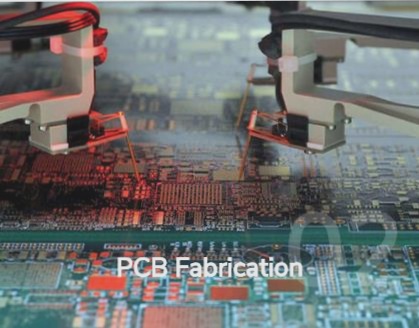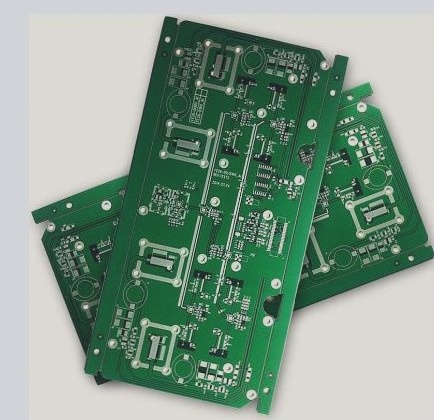Evolution of PCB Components Assembly Process
PCB components assembly process is an industry that has evolved rapidly, with the invention and commercialization of the PCB playing crucial roles. The electronic assembly based on PCB is known as PCBA.
Main Stages of Electronic Assembly Industry Development:
- Point To Point Technology
- Auto-Assembly Technology
- AI Technology (Auto-Insert or Through-Hole Technology)
- SMT (Surface Mount Technology or Auto-Mount)
1. Point To Point Technology
In this method, electrical circuits were assembled before 1950. The assembly was done manually, with components mounted on galvanized copper stations and connected by hand with wires.
PCB Components Assembly Process Overview
Even after the commercialization of PCB, the point to point assembly technique continued to be used, especially in devices like Hi-End amplifiers. This method required skilled assemblers and was not suitable for mass production.
2. Auto-Assembly Technology
Auto-Assembly is linked to the history of PCB, which was invented in the early 20th century by various inventors. Surface mount technology (SMT) is a popular method in electronics manufacturing, where components are assembled using automated machines to optimize production and reduce labor costs.
Details of PCB Components Assembly Process
Surface mount technology (SMT) is widely used in electronics manufacturing, offering benefits such as automated assembly and cost efficiency. Learn more about the PCB components assembly process and its advantages.
Electronic Assembly Lines
Electronic Component Assembly Conveyors
Electronic component assembly conveyors play a crucial role in the assembly and processing stages of electronic circuit boards, ensuring flexibility and continuity throughout the process. These conveyors are designed to meet the high precision requirements of the industry while minimizing direct worker contact with parts.
Types of Assembly Lines:
- Single assembly line
- Double assembly line
- Multi-stage assembly line
Structure:
- Conveyor frame: Steel frame system coated with powder or high-grade anodized aluminum based on customer specifications.
- Conveyor belt surface: PVC material resistant to chemical corrosion and high temperatures, ensuring product quality.
- Quality control: Motion control unit maintains system stability.
Operating the Chain:
Operating the PCB components assembly process involves automatic and manual operation methods.
Automatic Operation from the Controller
Before initiating the machine, a thorough system check is essential to ensure the safety of personnel and equipment, including power source verification. During operation, monitoring the transmission system, checking for oil leaks, vibration, engine temperature, and belt load air system is crucial.
Manual Operation
For manual operation, ensure the engine is on, the alarm system is off, and there are no empty lines before starting. Press the button to run and stop the conveyor assembly, closely monitoring the entire operation.
Operation Process of Electronic Components Assembly Line
Surface Mount Technology (SMT) is the primary process used in electronic assembly, involving various manufacturing steps:
- Application of solder paste on the PCB
- Placement of SMT components in the solder paste
- Soldering the board using the rework process
Glue Solder Paste in PCB Components Assembly Process
In the SMT assembly process, solder paste is applied to the board using stainless steel stencils. Precision is key, ensuring even application for proper soldering. Boards then proceed to the assembly process for component soldering.
Arrange and Assemble Components
Electronic components are loaded into the SMT machine, ensuring correct placement using intelligent software. Components are then automatically placed on the board using a vacuum pipette, following programmed coordinates. After assembly, the board is transferred to a reheat oven for component bonding.
PCB Components Assembly Process
Two soldering methods are employed based on order quantity. For mass production, the reflow soldering process is preferred for efficient assembly.
PCB Soldering Process Explained
The PCB soldering process involves placing the circuit board in a nitrogen atmosphere and gradually heating it with hot air. This causes the solder paste to melt and evaporate, fusing the components to the PCB. Once cooled, the solder hardens, fixing the components in place and completing the SMT assembly.
Vapor Phase Soldering for Sensitive Components
For prototypes or sensitive components, we utilize a vapor phase soldering process. This method heats the board to the solder’s specific melting point, allowing for soldering at lower or varying temperatures based on component requirements.
The final step in SMT assembly is welding. To ensure quality and detect defects, most orders undergo AOI visual inspection. The AOI system uses multiple cameras to inspect each panel, comparing them to a predefined reference image for consistency. Any deviations prompt operator intervention for correction or further inspection.
Key Criteria for Electronic Components Assembly Lines
Electronic components assembly lines must transport items gently, avoid shocks, and maintain stable speed. Necessary features include stainless steel frames, adjustable speed belt control, elastic PVC ropes, smooth-running motors, and collision avoidance mechanisms.
Advantages of Electronic Components Chain Systems
Electronic components chain systems offer several benefits:
- Enhanced Speed: Automatic lines optimize production and assembly speed.
- Stability: Systems adhere to international standards, ensuring consistent operation.
- Cost Efficiency: Continuous operation reduces costs compared to manual labor.
This overview highlights the PCB assembly process and the advantages of electronic component chain systems. For further inquiries, please don’t hesitate to reach out to us.



